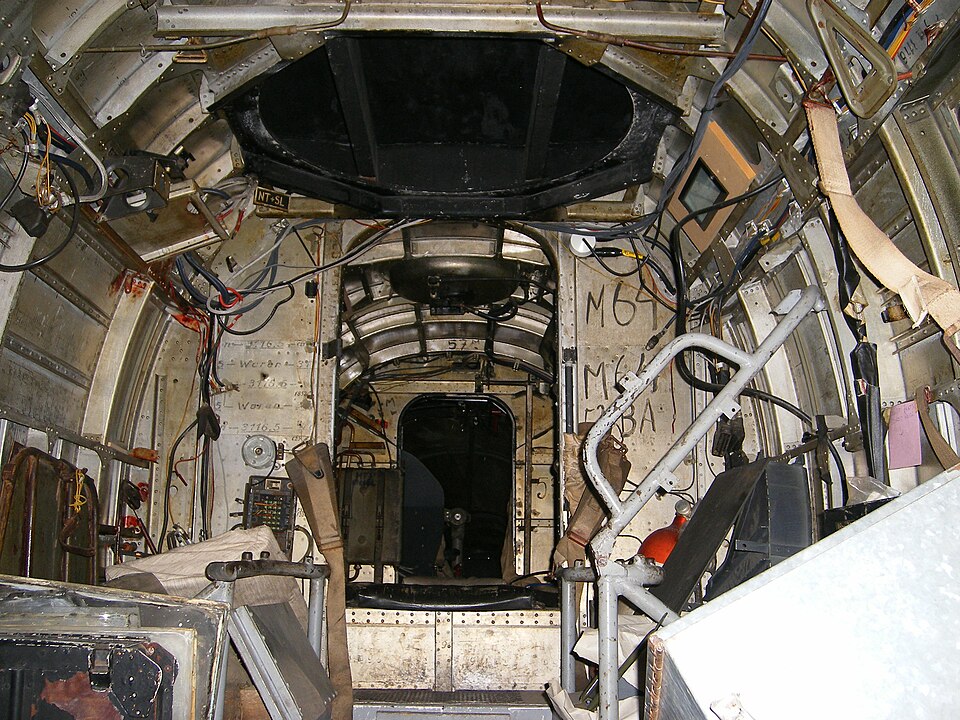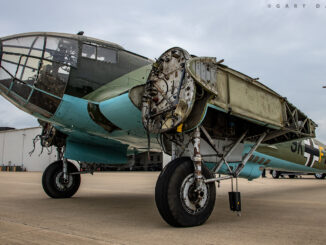
The Heinkel He 111, one of the best-recognized German bombers of World War II, was developed in the early 1930s by Siegfried and Walter Günter at Heinkel Flugzeugwerke as Germany’s secret project disguised as a civilian airliner. It was often described as a “wolf in sheep’s clothing” because of the nature of its secrecy: Germany had to go covert for this aircraft due to restrictions placed after World War I, which prohibited Germany from manufacturing bombers. Germany was ready to take illegal risks for this bomber as the Luftwaffe demanded a medium bomber that could support Blitzkrieg tactics and emphasized speed to outmaneuver enemy fighters. The final product of this confidential project was a success and the design proved itself in multiple roles including as a bomber, a torpedo bomber, and a transport aircraft.

Designing the Heinkel He 111
After Germany’s defeat in World War I, the nation was banned under the Treaty of Versailles from operating an air force. But the German re-armament began again in the 1930s, attracting the attention of aircraft designer Ernst Heinkel. Heinkel gave the new He 111 project — under the guise of a high-speed passenger aircraft — to the Günter brothers who spent 200,000 man-hours designing it. The first prototype He 111, the final design featuring a sleek airframe and all-metal construction, took its first flight on 24 February 1935 with test pilot Gerhard Nitschke. The aircraft performed well at a high speed with stable cruise and descent however, during the second flight, some issues surfaced with the longitudinal stability during the climb.

Unique Features
Cockpit
While early versions of the He 111 featured a stepped windscreen arrangement, the most famous versions featured a stepless cockpit with a fully glazed design and a laterally asymmetric nose. The left side had greater curvature to accommodate the pilot, while the bombardier was offset to the right. This design provided excellent visibility for both. Additionally, there was no floor beneath the pilot’s feet, enhancing downward visibility. Removable panels were installed in the glazing to allow the crew an emergency exit.

Fuselage
The fuselage had two main bulkheads, with the cockpit at the front. Between the bulkheads was the bomb bay, strengthened by a double-frame construction. The nose area housed the bombardier’s station, with a rotating machine gun mount slightly offset to preserve the pilot’s forward view. The space between the bomb bay and rear bulkhead contained radio equipment and gunner positions.

Wings
The He 111’s wings had a two-spar structure. The leading edges swept back to the engine nacelles while the trailing edges angled forward. The two main fuel tanks were located between the inner wing spars, with a second pair of reserve tanks positioned further out. These tanks held up to 910 liters (240 US gallons) of fuel each. Ailerons and flaps were positioned on the outer trailing edges with solid interior ribs, unlike the rest of the aircraft, which had hollow interior ribs to reduce weight.

Defensive Armament
The He 111 had defensive machine gun mounts in the glass nose and flexible mounts in the ventral, dorsal, and lateral fuselage positions. These guns provided significant fields of fire, crucial for defense. The nose gun could traverse 30 degrees laterally and move 10 degrees upward or 15 degrees downward. The dorsal and ventral guns had wider vertical movements and lateral traverses, with ranges varying based on the specific gun position. General Specifications
| Type | Medium bomber |
| Manufacturer | Heinkel Flugzeugwerke |
| Engine | Typically two Junkers Jumo 211 or Daimler-Benz DB 600 engines, depending on the variant |
| Empty Weight | 19,136 lbs |
| Maximum Takeoff Weight | 30,864 lbs |
Dimensions
| Wingspan | 22.6 meters |
| Length | 16.4 meters |
| Height | 4 meters |
Performance
| Maximum speed | 270 mph |
| Service ceiling | 21,300 feet |
| Range | 1,243 miles |
Top Heinkel He 111 Milestones
The He 111’s first combat use was in the Spanish Civil War in 1937 as part of the Condor Legion; it bombed Republican airfields at Alcala and Madrid. It also participated in the Battle of Britain as a strategic bomber and served the Luftwaffe across the European theatre as a medium bomber until 1943. Afterward, a loss of air superiority resulted in it being relegated to a transport role in Western, Eastern, Mediterranean, Middle Eastern, and North African Front theatres. The He 111 bomber was also used extensively in the Blitzkrieg campaigns in France, North Africa, and the Eastern Front.

The Germany Legacy
Currently, five original German-built Heinkel He 111 bombers are preserved in museums worldwide: He 111E-1 Pedro in Madrid’s Museo del Aire, a He 111P-2 at Norway’s Royal Norwegian Air Force Museum, a He 111H-20 on display at the RAF Museum in London, and a CASA 2.111B at the Kent Battle of Britain Museum which in 2019 was discovered to be a refitted He 111 H-16.

Related Articles
"Haritima Maurya, pen name, ""Another Stardust,"" has been passionate about writing since her school days and later began sharing her work online in 2019. She was drawn to writing because of her love for reading, being starstruck by the art of expression and how someone can make you see and feel things exclusive to their experience. She wanted to be able to do that herself and share her mind with world cause she believes while we co exist in this beautiful world least we can do is share our little worlds within.
As a commercial pilot, Haritima balances her passion for aviation with her love for storytelling. She believes that, much like flying, writing offers a perspective beyond the ordinary, offering a bridge between individual experiences and collective understanding.
Through her work, ""Another Stardust"" aims to capture the nuances of life, giving voice to moments that resonate universally. "









A couple of additional items to contribute:
The He 111 – although deemed too vulnerable to penetrate enemy airspace in the West, was still capable on the Eastern front, where they successfully raided the Poltava airbase in mid 1944, destroying 50+ USAAF aircraft on a ‘shuttle mission’ and wrecking base facilities. Later in 1944/45, the He 111 was also utilized as a cruise-missile launcher – flying low ‘n’ slow over the North Sea to avoid detection, then ‘popping up’ to unleash a V1 against Britain – it was difficult and dangerous work, for attacker and defender alike, and resulted in a very early
development of an ‘AWACS’ aircraft to coordinate RAF interception efforts.